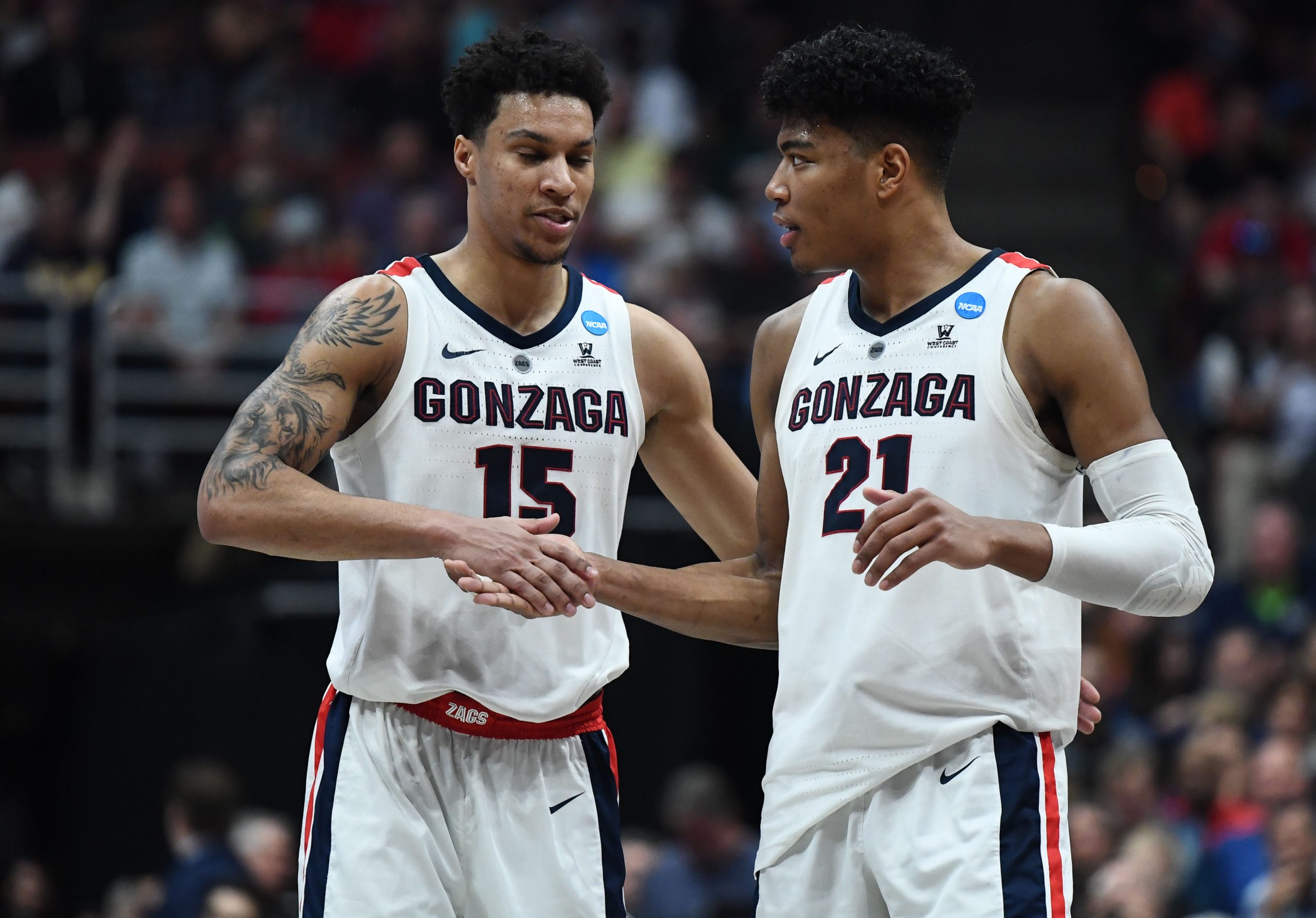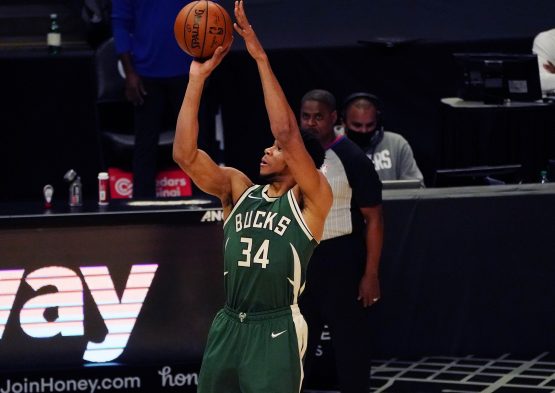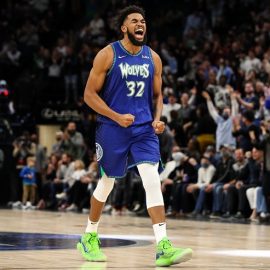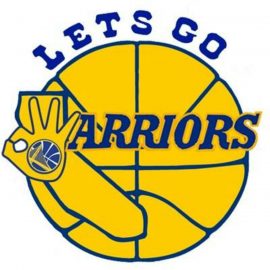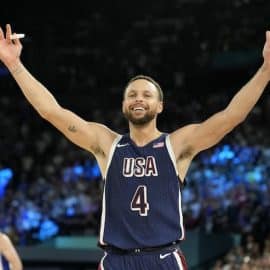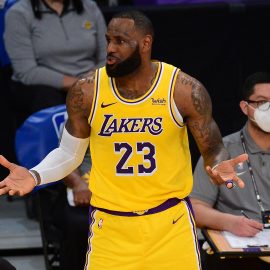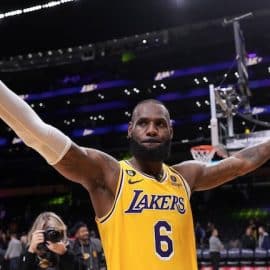The 2019 NBA Draft is tomorrow night. It seems like just yesterday that the New Orleans Pelicans jumped up on lottery night to land the first overall pick. While the pool of prospects in this year’s draft is not considered as strong as years past, there are plenty of good players on the board that can help change a franchise. Here are my top-30 players on my 2019 NBA Draft Big Board.
1. Zion Williamson, Forward, Duke
There is no debating this one. Zion Williamson has been considered the best prospect in this draft for over six months. It has gotten to the point where the 2019 NBA Draft Lottery was just called the “Zion Lottery.” Williamson has the chance to be special. At 6’7”, Zion might be the most athletic forward at 285 pounds we have ever seen. He can get to the rim at ease and finish through contact, or over contact. Defensively, he is just as good. Despite his size, Williamson projects to be a switchable shot blocker in the NBA, something every team needs in the modern NBA.
To take his game to the next level, Williamson will need to develop a right-hand finishing move, as he is still left-hand dominant. Additionally, more arc on his three-point shot will lead to a higher percentage for Williamson in the NBA. Nonetheless, Williamson is the clear-cut #1 prospect in this draft.
2. RJ Barrett, Forward, Duke
At roughly the same height as Zion Williamson, RJ Barrett is a full 80 pounds lighter, which is astonishing. But, that does not matter. Barrett has the potential to be one of the top scoring forwards in the NBA sooner rather than later. Barrett has a great shot release that will translate well to the NBA. He is also great at getting to the rim, but mainly from the left. His shiftiness in the lane helps him finish around shot blockers, but developing a right-hand finish in the NBA will be crucial.
Right now, RJ Barrett is an inconsistent playmaker, but this can quickly become a strength of his. While he fired some untimely passes to teammates at Duke, when he was being unselfish at the right times, he made some great feeds. Just check out this pass below.
3. Ja Morant, Guard, Murray State
For a lot of NBA Draft analysts, Ja Morant comes in at #2 on their big board. However, I think RJ Barrett is too special and has too much potential to be a top-tier player to put Morant ahead of him. But, that does not take away from Morant’s game. The world was put on notice during March Madness when Morant was flying around the court whipping ridiculous passes with both hands. His athleticism and shiftiness allow Morant to twist his body at the rim and finish, or fire a pinpoint pass to an open shooter on the perimeter. No matter where he is on the floor, Morant always seems to be able to pass a teammate open. Along with his passing, Morant’s motor on the court is extremely exciting. He never stops, which gives his game shades of a smaller Russell Westbrook on the offensive end. Morant rebounds well for his size, but since he was a focal point on offense with Murray State, we do not know much about his defense.
Along with his questionable defense, Morant is not the purest shooter in the draft. He showed flashes of being able to knock down deep threes in the NCAA Tournament, but that was not consistently there in his two years at Murray State. Along with his shooting consistency, Morant’s ability to value the basketball will need to improve. Instead of always making the right read and easy pass, there were times that Morant would get careless trying to make the flashy play.
[polldaddy poll=10345982]
4. De’Andre Hunter, Forward, Virginia
De’Andre Hunter is not the most flashy prospect in the 2019 NBA Draft, but he will be a reliable pick right away. At 21 years-old, Hunter has one of the highest floors of any prospect this season. Hunter’s defensive versatility will show in the NBA right away. His quick feet and great length (7’2” wingspan) give Hunter the ability to guard 1-5 in the NBA. He is not the best at providing help defense at this point in his career, but his on-ball defense on the perimeter and in the post has All-NBA Defense potential.
On the offensive side of the ball, Hunter proves to be a classic stretch four at the next level. His simple, smooth shot release gives him the ability to pop after screening for a ball-dominant player. While he is not too comfortable taking people off the dribble, he does have a nice pull-up game in the mid-range when going to his left. Finally, Hunter is an underperforming passer, which will need to improve at the next level. There are too many times where Hunter fails to make the right read on time. He gets caught with his head down driving to the basket, which causes him to miss wide open guys under the rim. While he has things to work on, I see De’Andre Hunter being able to be the third best player on a championship roster down the road.
5. Jarrett Culver, Guard/Forward, Texas Tech
Jarrett Culver was a big reason Texas Tech was able to get to the NCAA Tournament Championship in 2019. Culver is a versatile wing that projects to be a great defender with offensive upside. On defense, Culver uses his almost 6’10” wingspan to cause havoc on the opposing player. He will be very switchable at the next level and will be able to defend guards and forwards day one in the NBA.
On the offensive side of the ball, there are more question marks for Culver. He is a good finisher in the paint and on two’s, as he shot 52% from that area this season. However, he lacks a consistent move to get by defenders. He has a slow first step and his size at a guard position will not be as big of an advantage in the NBA. Along with his subpar moves to the rim, Culver needs to improve his jump shot. He has a great arc on the shot, but his release point is not consistent. As a not very explosive player, Culver will need to be able to consistently knock down three-pointers to last in the NBA. However, his feel for the game, defensive abilities, and playmaking potential make him one of the top prospects in the draft.
6. Coby White, Guard, North Carolina
Coby White is perhaps the most versatile scoring point guard in this year’s draft. His scoring ability from anywhere on the court makes him an intriguing prospect in this year’s lottery. As a score-first point guard, White showed the ability to knock down deep shots at North Carolina. He showed a great ability to make defenders pay for going under on screens, casually pulling up from beyond NBA range. Using pick-and-rolls is the main way that White orchestrates his offense. He has some trouble taking defenders in isolation but is the best scoring guard off of a pick-and-roll. White’s size at the rim helps him finish over smaller defenders, but improving his off hand and adding more strength will help his finishing ability at the next level.
On the flip side, White needs to become a better passer. White does not show a lot of point guard polish. He has trouble passing out of the pick-and-roll, especially when trying to fit passes in tight windows. Averaging just 5.7 assists per 40 minutes at North Carolina as the primary ball handler, White could benefit from playing with another playmaker in his early days in the NBA. However, White’s speed and scoring ability off the pick-and-roll make him my second-ranked point guard on my 2019 NBA Draft Big Board.
7. Darius Garland, Guard, Vanderbilt
Darius Garland is one of the hardest prospects to judge in this year’s pool of prospects. After playing just five games at Vanderbilt because of an injury, Garland is a risk for any team that selects him this year. Garland has the chance to become one of the best shooters in this class. He has a smooth stroke, with a great release point. He is shifty and a great ball handler. He does a nice job getting to his spots and he loves the mid-range pull-up shot, which he consistently knocks down. On top of all of that, standing at 6’2”, Garlands rebounds his position, which is crucial in today’s NBA.
On the flipside, Garland lacks strength, which hinders his ability to finish over bigger paint defenders. Along with that, he showed some questionable shot selection at times in his five games in college. Valuing the basketball and adding strength will be crucial for Garland to come out of this class as a top performer.
8. Cam Reddish, Forward, Duke
As a prospect with one of the highest ceilings and potentially one of the highest bust potentials, a mid-lottery pick seems like a perfect place for Cam Reddish. Over the course of his one season at Duke, Reddish was up and down all season. He recorded eight games with over 20 points, but then matched that with 13 games under 10 points. That type of inconsistent play at the college level is concerning for a player with the physical tools that Reddish has. He is physically gifted, but I worry that his mindset and lack of consistency could turn him into a guy with All-Star potential that never fully taps into his skill set. Nevertheless, Reddish has a smooth three-point stroke, and his length on the defensive end is deadly when the effort is there. With effort on a nightly basis, Reddish has elite defensive potential, which is why Paul George comparisons are there.
His quick first step off the catch gives him the ability to get to the rim, but his two-foot takeoff has given him trouble finishing at the rim. Additionally, Reddish is not known as a playmaker, which limits his ability to be the first option on a playoff team. Reddish averaged just 2.6 assists per 40 minutes at Duke, and he had 16 games where he recorded just one or no assists. Teams can bet on Reddish’s potential because his ceiling is very high, but teams should also be aware of his bust potential.
9. Sekou Doumbouya, Forward, France
Sekou Doumbouya is the top international prospect in this year’s draft. Doumbouya has great physical tools standing at 6’9” with a 6’11” wingspan. His size helps him get into the paint, and his speed in transition is useful. Related to his physical tools, Doumbouya has the potential to be a versatile defender at the NBA level, but that might take time to develop, which is okay at just 18 years-old.
As for his shooting, Doumbouya has work to do, but the potential is there. In a recent workout in front of coaches and GMs, Doumbouya was pouring in the three’s. There is a slight dip in his shot, but that is not overly concerning as he projects to be a good shooter at the next level. Finally, his handle and ball control is something that needs to improve. Doumbouya loses control at times, allowing the ball to fumble away from him. This is shown in the clip below. While Doumbouya does end up finishing the play, the ball that far away from his body will get stolen in the NBA.
10. Bol Bol, Center, Oregon
Give me all your Bol Bol stock. A 7’2” center that can block shots and hit three-pointers? Sign me up. In all honesty, I am all in on Bol Bol. If he did not have injury concerns, he would be in the top-five on my 2019 NBA Draft Big Board. Bol has a natural shooting touch, despite his low release. While he only played nine games at Oregon last season, Bol shot an impressive 13-25 from deep. Furthermore, Bol shoots over 80% from the free-throw line. There is little question in my mind that this will translate to the next level.
Another upside to Bol’s game is his shot blocking. With a frame similar to Rudy Gobert, Bol averaged 3.6 blocks per 40 minutes with Oregon. Bol will need to put on some weight to be able to defend bigger centers and get better at finishing under the rim, but this man is the real deal if the effort is there and he stays healthy. End of the lottery teams need to take notice.
11. Rui Hachimura, Forward, Gonzaga
Rui Hachimura took another step forward in his development at Gonzaga last season. As a 6’8” forward with a 7’2” wingspan, Hachimura used his strength to overpower college defenders. Going into the lane and with the ball in transition, Rui puts his head down a little too early and too often. This did not get him in a lot of trouble at the college level, but not being able to make an open read in the NBA could be a problem for Hachimura. Staying in the moment on the drive to the hoop and knowing that a pass to an open shooter is just as good as getting to the rim will do Hachimura wonders.
In my eyes, Hachimura is worth the risk. Even though he is an older prospect (21 years-old), Hachimura is still raw and improving every year. During his junior season with Gonzaga, Hachimura scored under 10 points in a game just twice, while scoring 20 or more points 21 times. Here’s how his per 40-minute numbers compared from his sophomore season to his junior season, which shows his yearly improvement.
Sophomore Season: 22.4 PPG, 9.1 RPG, 1.2 APG, 56.8% FG, 19.2% 3PT
Junior Season: 26.1 PPG, 8.6 RPG, 2.0 APG, 59.1% FG, 41.7% 3PT
Hachimura is still raw at 21 years old and some of his reads are slow. But, I’m putting my money on Hachimura figuring it out. His work ethic and physical tools are there, it will just take time and experience to get past some of his on-court weaknesses.
12. Nickeil Alexander-Walker, Guard, Virginia Tech
As a long, lengthy wing, Nickeil Alexander-Walker (NAW) projects to be one of my sleepers of the draft. NAW has great size at the point guard position, standing at 6’5” with a near 6’10” wingspan. That length, coupled with his effort should give him the ability to guard 1-3 in the NBA. On the offensive side of the ball, NAW has a bit of a weird shooting release, as he seems to sling the ball up from over the top of his head. Nevertheless, it was effective at Virginia Tech. NAW shot 37.4% from three last season and 77.8% from the free-throw line. His touch and arc on his shot were particularly evident on spot-up shots, but the mechanics were not as smooth off the dribble, especially in screens.
As a passer, NAW showed flashes. He has the ability to look off help defenders, then rockets a pass to an open shooter or dump a pass off to a dunker. While his speed and quickness will not floor any defenders, his ability to find sneaky passing lanes will make him a positive playmaker in the NBA. Finally, NAW could still stand to put on a little more weight in order to bounce off of bigger defenders at the rim. His size and length come in handy in a number of ways, but extra strength could go a long way.
13. PJ Washington, Forward, Kentucky
In his sophomore season at Kentucky, PJ Washington showed considerable improvement in a number of ways. His three-point shooting increased from 23.8% to 42.3% last year. While he still only attempted 2.2 threes per game last season, his stroke from the outside continues to improve. Another area that improved for Washington last season was his rebounding. Washington continued to find the right spot on the floor to crash the glass. He projects to be a great rebounding forward at the next level with his size and intelligence.
While Washington’s shooting continues to get better, his bread and butter is his right-hand hook shot. That is a great move to use, but as NBA defenders begin to familiarize themselves with Washington’s game, he will have to diversify and develop a counter. In my eyes, PJ Washington is a rather solid pick. Will he ever turn into a top-tier NBA All-Star? Maybe not, but that does not mean he cannot be an everyday starting power forward in the NBA.
14. Brandon Clarke, Forward/Center, Gonzaga
Making his name as a versatile defender in college, Clarke will have work to do if he wants to get to that point in the NBA. Clarke was an elite shot blocker in college with his great work ethic, being in the right spots, and his explosive leaping ability. However, his shorter wingspan (6’8”) may cause problems being as efficient of a shot blocker in the NBA. Clarke figures to be a power forward in the NBA, with small-ball five potential. His size fits the small-ball criteria, but his strength will give him problems in the paint against bigger centers.
Clarke will need to be more than just a dunker at the next level. While his defensive versatility and basketball IQ make him an intriguing prospect, Clarke was almost exclusively a dunker and short-range player in college. Clarke attempted just 15 three-point shots last season, and his 69.4% clip from the free-throw line could also be improved on. He has shown the ability to put some touch on the ball, but that skill is completely hypothetical as we stand here today.
15. Jaxson Hayes, Center, Texas
As an uber-athletic big, Jaxson Hayes is not a typical, modern NBA big man. He is great above the rim and catching lobs, but his lack of a jump shot should worry teams. Hayes did show some touch from the free-throw line last season shooting 74% from the charity stripe. While this may give teams some hope that Hayes will eventually develop into a spot-up shooter from mid-range, he is not there yet. If Hayes ever develops a consistent jump shot from deep, I’ll be the first one to admit my mistake.
Although the shooting deficiencies are there, Hayes’ shot-blocking ability makes him an exciting prospect to take a chance on. Hayes will need to work on controlling his blocks at the NBA level, something he did not do very well in college as he tried to launch each block as far out of bounds as possible. Additionally, there are some rebounding concerns with Hayes. He averaged just 8.6 rebounds per 40 minutes at Texas, which should be higher for a 6’11” center against smaller guys than what Hayes will see in the NBA.
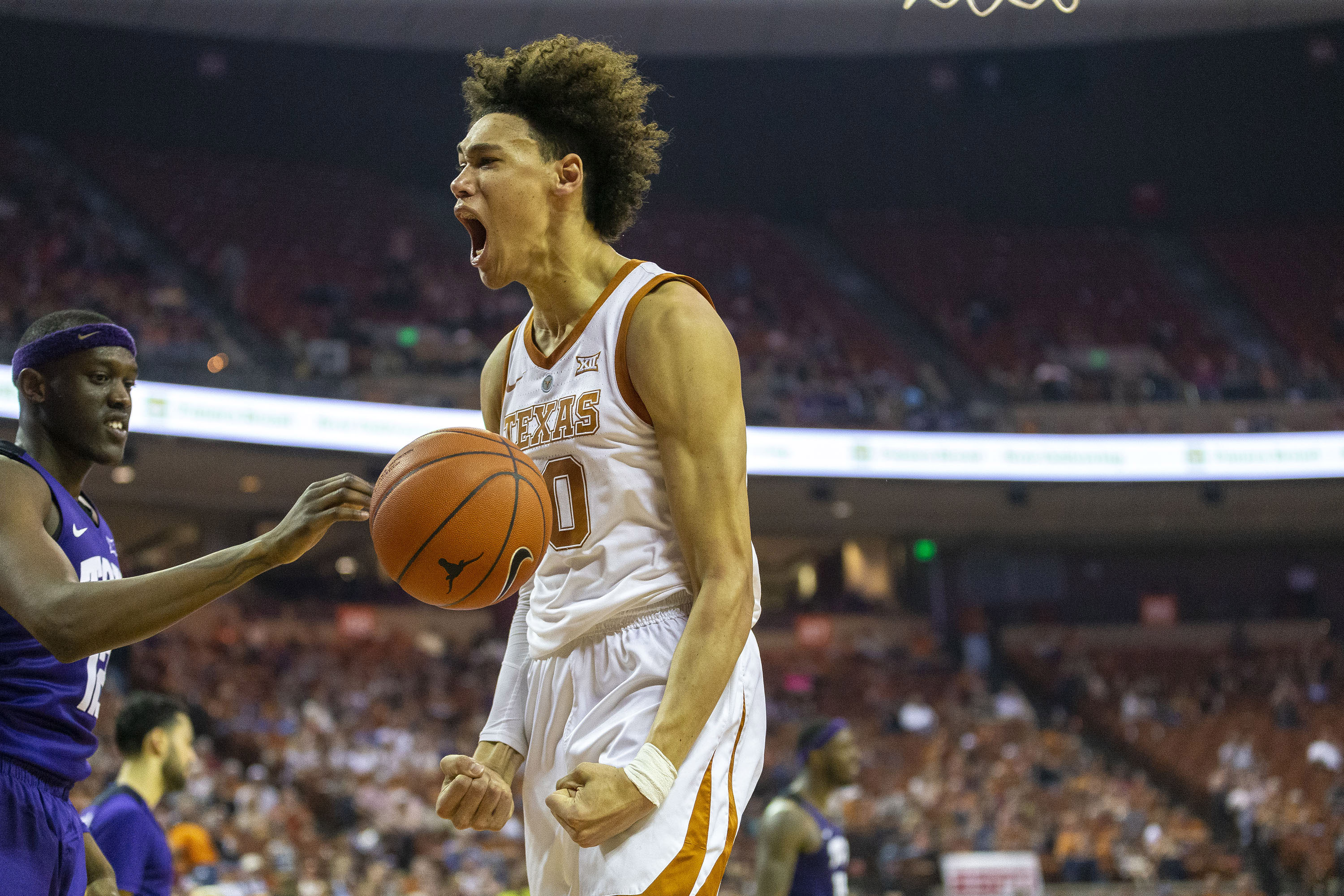
16. Nassir Little, Forward, North Carolina
Potential. Athleticism. Defense. Those three words are what will get Nassir Little drafted on Thursday night. Standing at 6’6”, Little has a ridiculous 7’1” wingspan, which will give him great versatility on the defensive side of the ball. Little has a thick frame and his physical tools will give him the ability to guard multiple positions in the NBA. On the offensive side of the ball, Little was almost exclusively a dunker and short mid-range shooter at North Carolina. Little was 14-52 (26.9%) from three-point range, and he did not look comfortable loading it up from deep.
As a dunker, Little showed elite lob catching potential in the open floor. Pairing him with a playmaking point guard to get Little looks close to the rim will be key to start his career. The total fluidity is not there for Little on the offensive end, as he often forces up shots, instead of making the right reads. But, his physical tools and defensive upside make him a potential lottery pick on Thursday.
17. Goga Bitadze, C, International/Georgia
A thick center with the potential to turn into a Jusuf Nurkic type player, or Enes Kanter with a defensive game. Bitadze is a great rebounder with a variety of moves to score the basketball. Bitadze is great around the rim and has touch from the mid-range game. He lacks flair and athleticism at the center position, which can get him into trouble on defense. Bitadze has slow feet, even for a center, which will need to improve if he wants to move his game to the next level. Bitadze projects as an interesting prospect in Thursday’s draft because of the wide selection of picks where Bitadze could be selected.
18. Romeo Langford, Guard, Indiana
Romeo Langford has the physical traits to be an elite wing in the NBA. However, his lackadaisical effort off the ball on offense and on defense makes him a big question mark for teams. Langford is known as an isolation scorer, and when the ball is not in his hands, he does not seem interested in cutting, screening, or moving at all. Although his effort is not where it needs to be, Langford is elite in isolation scoring, but his quirky jump shot concerns me. His release is fine, but he almost hits his forehead and hair every time he loads up his jump shot. Shooting just 27.2% from three at Indiana was not what teams wanted to see out of an isolation scorer.
While his shot and effort are not where it needs to be in the NBA, Langford does a great job creating space on his way to the rim. He loves shooting off the dribble and had “wow” moments at Indiana on different step-back jumpers. Romeo Langford is not close to a finished product, and it will take some work to get there, but he is another prospect that some teams might want to take a swing on.
19. Nicolas Claxton, Center, Georgia
Nicolas Claxton projects as a modern NBA center. As a solid passer, who showed some touch on his shot, Claxton has shown shades of Al Horford. Claxton did not shoot it great in college, but his willingness to fire from deep and his improving free-throw percentage shows me the potential is there. Along with his offensive game, Claxton is a good shot blocker, getting to his spots on defense, despite his smaller frame. If Claxton can add some physicality and do a better job at getting early post position on offense, he has a chance to be a nice piece on a playoff ready team.
20. Tyler Herro, Guard, Kentucky
Shooting is at a premium in the NBA, and that is what Tyler Herro can bring to an NBA team. Herro’s sweet stroke looks to translate easily over to the NBA. Along with his shooting, Herro showcased some sneaky athleticism at times last season, which could make Herro a better defender than some project.
Herro had 9 games last season where he did not make a single shot. While NBA spacing could help that number, modeling himself as a top shooter in this draft, that is not a good look. When Herro’s shot is not dropping, he does not allow that to affect other areas of his game. As a second primary move, Herro likes to attack the rim and he is not afraid to mix it up with bigger players, which helps his rebounding numbers. Herro plays with effort every single night, but his inconsistent shooting in college and lack of explosion has me projecting him similar to Luke Kennard.
21. Luguentz Dort, Guard, Arizona State
Strengths:
- Power. Dort plays with a ton of aggression, especially on his way to the rim.
- Versatile defender. Going off the previously mentioned aggression, Dort plays the game with high intensity, never failing to attempt to jump a passing lane.
- Smooth handle that allows him to get to the rim.
Weaknesses:
- Jump shot. Shot just over 30% from three in college. Improving his mechanics during the pre-draft process has been good to see. Can become a true 3 & D player with development.
- Uses the drive too much. As he becomes a better shooter, this should help Dort not force the ball inside as much. Sometimes he becomes too reliant on putting his head down to try to get to the rim.
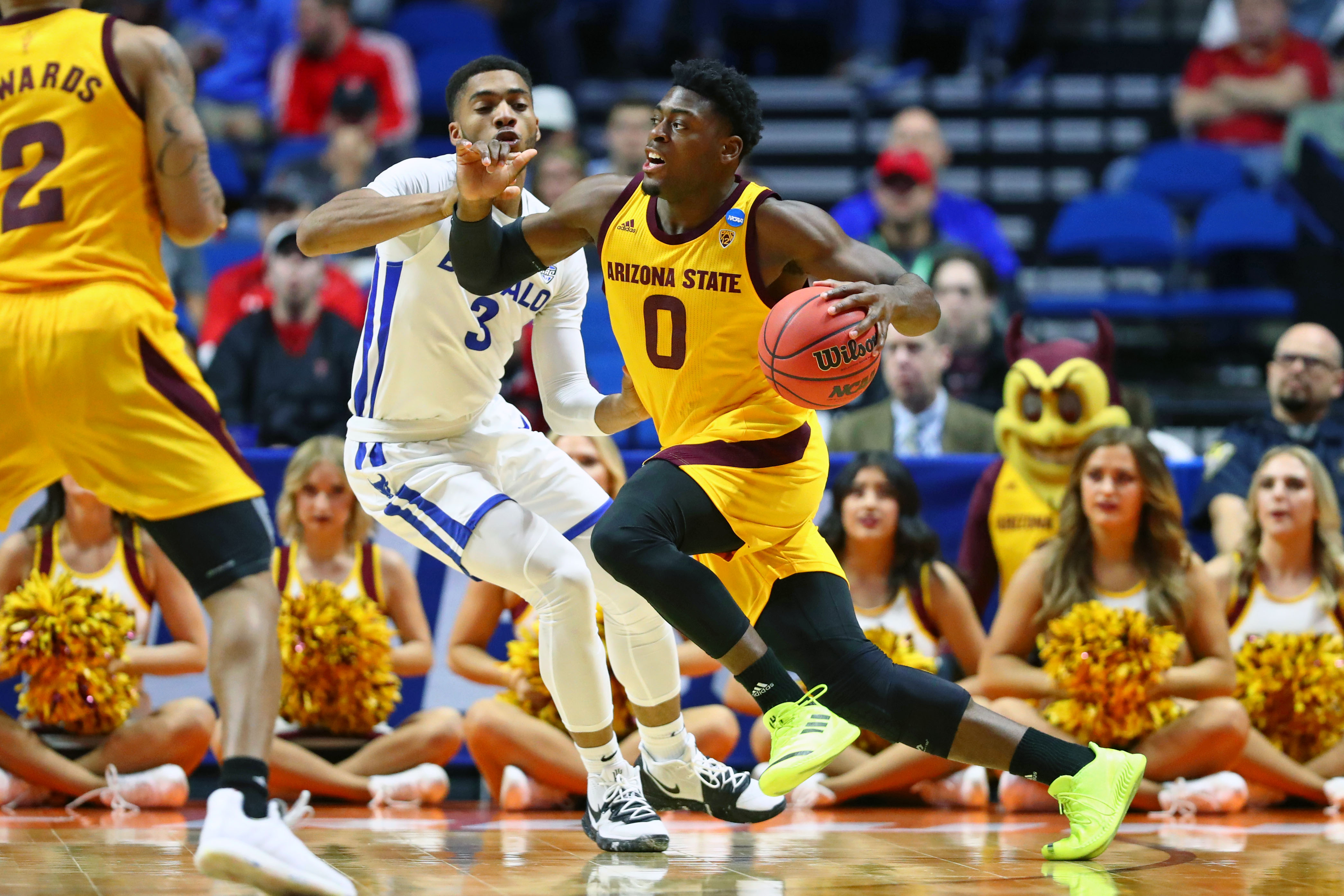
22. Kevin Porter Jr., Guard, USC
Strengths:
- Scoring versatility. Porter will be able to score at the next level in a number of different ways. His athleticism helps him around the rim, and his shot worked in college, even though he has a low release.
- His athleticism and quick feet will allow him to be a plus defender at the next level, but his mindset and effort will have the final say in that category.
- Shifty. He has some of that James Harden type of wiggle to him. Although it does not help him get to the free-throw line, it does help him break down the defense on his way to the rim.
- Upside
Weaknesses:
- Free-throw shooting. Although Porter knocked down his three-pointers at an over 40% clip, he shot under 55% from the free-throw line. This is why I am not sold on his low release and shot form at the next level.
- Mindset and effort, especially on defense. While Porter does not lack confidence on the offensive end, that seems like the only end he cares about. He is a good shot blocker for his position, but if he locks in on defense, he could be great on that end of the floor.
23. Grant Williams, Forward, Tennessee
Strengths:
- Defense. Williams has a similar “dog” mentality to P.J. Tucker. This guy will compete and work his ass off on defense.
- Passing. Williams averaged 4.0 assists per 40 minutes at Tennessee last season. He makes the right read on the court.
- Inside scoring. He likes to rise over smaller defenders in the paint for a face-up jumper. This might not be as effective in the NBA because of the size of defenders, but it is a move he can build off to build his offensive repertoire.
Weaknesses:
- Inside scoring is his main way of scoring. He does not like shooting from the outside and he is not overly athletic.
- Will not project as a shot creator or a ball handler. He cuts on offense, but developing a corner three will be crucial for Williams’ development.
- Not a lot of upside. Williams is seen as a glue guy, which every team needs, but I do not see him turning into an All-Star. He can be a solid starter or rotation player in the NBA.
24. Jalen McDaniels, Forward, San Diego State
Strengths:
- Athletic. McDaniels loves to get out and run and his athleticism is off the charts. He is very quick, especially with his first step as he attacks closeouts.
- Length. With a 7’0” wingspan, McDaniels can develop into a good defender. Adding weight will be important for McDaniels to stay with bigger opponents.
- Shooting potential. McDaniels only hit 32% of his three-point attempts last season at San Diego State, but has great 3 & D upside.
- Playmaking potential. Just watch the clip below.
Concerns:
- Strength. McDaniels gets in trouble not being able to defend bigger players and finish through contact at the rim. However, his lack of strength did not affect his rebounding in college as he averaged over 10 rebounds per 40 minutes last season.
- Needs to play within himself. He can get out of control at times, especially when he is swarmed by defenders. It will take time at the NBA level for the game to slow down and allow him to make the right reads.
25. Chuma Okeke, Forward, Auburn
Strengths:
- Shooting. Okeke has a smooth, compact release. Not too many moving parts in his shot, which makes it very transferrable to the NBA. Combined to shoot 38.9% from three during his two seasons at Auburn.
- Cutting. Okeke does not get complacent on offense. He likes to set screens away from the ball and catch defenses off guard with back-door cuts.
- Improving defender. Okeke increased his steals per 40 minutes by 1.2 during the 2018/19 season, compared to the 2017/18 season. He will fit in very nicely into a modern NBA defensive system.
Concerns:
- Needs to become a better off the dribble shooter. NBA teams will be able to take away the catch-and-shoot, which is where Okeke thrives. Having a counter will keep defenders on their heels.
- He does a good job playing within himself on defense, but he took some risky gambles at Auburn in passing lanes. These gambles will frustrate NBA coaches, but it is something that can be fixed.
26. Matisse Thybulle, Guard, Washington
Strengths:
- Lockdown defense. Thybulle is one of the best defenders in the draft. Last season at Washington, he averaged 4.5 steals and 2.9 blocks per 40 minutes. He gets into passing lanes with ease and reads cuts at an extremely high level. Also, he does all of this without fouling.
- Length. This factors into becoming a versatile defender at the next level. Standing at 6’5”, Thybulle has a 7’0” wingspan. Yeah, you heard that right. He will be able to guard 1-4 in the NBA with the way he uses his physical traits.
- Three-point shooting. Thybulle had a down shooting season last year at Washington, but his smooth stroke should translate to the NBA. This is a guy that will give NBA teams 3 & D potential on day one.
Concerns:
- Not an extremely versatile player on offense. He knows his role and plays in that role. He is not likely to become a ball-dominant guard that can orchestrate an offense.
- Not a lot of upside. I think teams know what they are getting with Thybulle. He can become a Tony Allen type of defender, with the potential to develop a shot. He is not going to be an All-Star.
27. Dylan Windler, Forward, Belmont
Strengths:
- Shooting. Shooting. Shooting. Dylan Windler is a sniper from beyond the arc. In his four years at Belmont, Windler shot 40.6% from three, including over 42.5% during his last two seasons. He has a smooth stroke, and there is no doubt this will translate to the next level.
- Rebounding. Dylan Windler never fails to put in the effort on the glass. He is constantly in the right spot for the ball to bounce his way. At 6’7”, Windler grabbed an impressive 13.0 rebounds per 40 minutes last season for Belmont.
- Playmaking ability and knowledge of the game. Windler will make the right play. When he does not have the ball, he is running around the floor trying to get open for a three. When he has the ball, if a teammate is open, he will find them. Also, as a sneaky athlete, Windler does more than just shoot.
Concerns:
- Strength. Windler has trouble guarding bigger guys. His strength also becomes a problem in the paint on offense. Although he is a sneaky athlete, Windler does not finish well through contact.
- Ball handling. He can create offense, but looks more comfortable coming off of screens rather than orchestrating them.
28. Keldon Johnson, Guard, Kentucky
Not seen as an overly flashy player, Keldon Johnson laid his heart and body on the line at Kentucky last season. Johnson averaged 17.5 points per 40 minutes at Kentucky while shooting over 38% from three. He did not have a ton of three-point attempts, but his touch and form give me a reason to believe he can be a serviceable shooter in the NBA. A big part of the scoring was Johnson’s decisiveness when he gets the ball. He is slow to make reads and passes to open teammates, but he gets the ball and goes. He works to get to his spots and beat his defender with will and effort, which will not always work in the NBA.
Physically, Johnson has good size for a guard, but his quickness is a concern on the defensive end. I question his ability to handle faster guards at the next level even though the defensive effort is there. Johnson is not the fanciest prospect in the draft, but I project him as a serviceable bench player for many years to come.
29. Cameron Johnson, F, North Carolina
Strengths:
- Shooting. Are you sensing a trend on my big board prospects of late? There are a lot of guys in this draft that can shoot and have defensive upside. Johnson’s high release and limitless range makes him another one of those guys. Johnson shot almost 46% from three on 5.7 attempts per game at North Carolina last season.
- Effective. Johnson does not take a lot of bad shots. Even though he shot a lot of threes, Johnson shot over 50% from the field and averaged 16.9 points per game on 11.6 shots per game. He will fit in alongside any ball dominant players and find his spots.
- Great in transition. Likes to leak out and spot-up for a corner three.
Weaknesses:
- Age. Johnson is 23 years-old. While that is still young, it is not young for an NBA prospect. Johnson has areas he can improve, but he will be seen as a plug and play guy with limited upside.
- Not a great athlete. Johnson lives off his shooting ability and basketball IQ. He will not jump out of the gym or make many highlight reel blocks.
- He improved his rebounding last season at UNC, but standing at 6’9”, Johnson should be logging closer to 8 rebounds per game, not 6.
30. Daquan Jeffries, Guard, Tulsa
Strengths:
- He will fit in. Jeffries will be a system player. Drawing comparisons to P.J. Tucker, Jeffries is the type of guy any team will want on their roster. He is not a ball dominant player, and he is okay taking a back seat to others.
- Spot-up three-point shooting. Jeffries shot 37.7% from three over the course of his career at Tulsa. Much like P.J. Tucker does with the Rockets, Jeffries figures to be placed in the corner on offense, ready to catch and knock down open threes.
- Crashes the offensive boards. Jeffries averaged close to 2 offensive rebounds per 40 minutes at Tulsa. He is not afraid to get in the thick of things and mix it up with bigger defenders.
Weaknesses:
- Not overly athletic. Jeffries lacks great speed, and he counts on his positioning and IQ to be in the right spots on defense.
- Is not comfortable shooting off the dribble. He will not be a playmaker at the next level. He will fit in great as a rotational player on a competitive team, but do not expect Jeffries to create offense on his own.
Add The Sports Daily to your Google News Feed!
